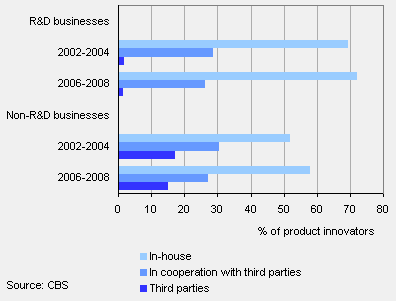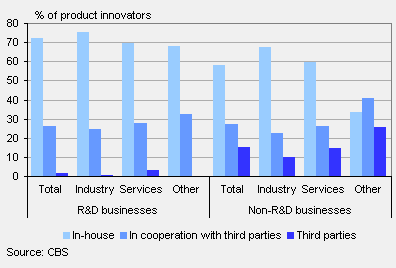Innovative changes usually have in-house basis

In the period 2006-2008, nearly 10 thousand businesses – 16.7 percent of all businesses in the Netherlands employing 10 or more people – have innovated their products. The proportion of businesses implementing in-house innovations has risen among businesses not engaged in research and development (R&D) activities.
Product innovators by method of innovation

In-house innovation increasingly important for non-R&D businesses
The proportion of businesses not engaged in R&D activities implementing product innovations is growing considerably and was nearly 6 percentage points higher in the period 2006-2008 than in the period 2002-2004. For R&D-businesses, the growth was just under 3 percentage points. This pattern shows that more and more businesses combine outsourcing of R&D activities with in-house implementation of product innovations. The proportion of businesses engaged in combined innovation projects with one or more partners declined. The number of businesses, which entirely rely on the expertise of third parties for their product innovations, is also decreasing.
More R&D businesses innovate their own products
R&D businesses, more than non-R&D businesses, have stepped up their in-house innovation activities. In-house product innovation is an important element in manufacturing industry, as industrial innovations require a high degree of specialisation. On the other hand, third parties more often implement innovations in non-R&D businesses.
Product innovators by innovation method and sector, 2006-2008

Marcel van Wijk and Vincent Fructuoso van der Veen